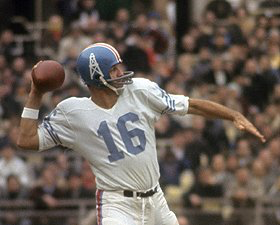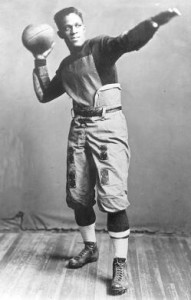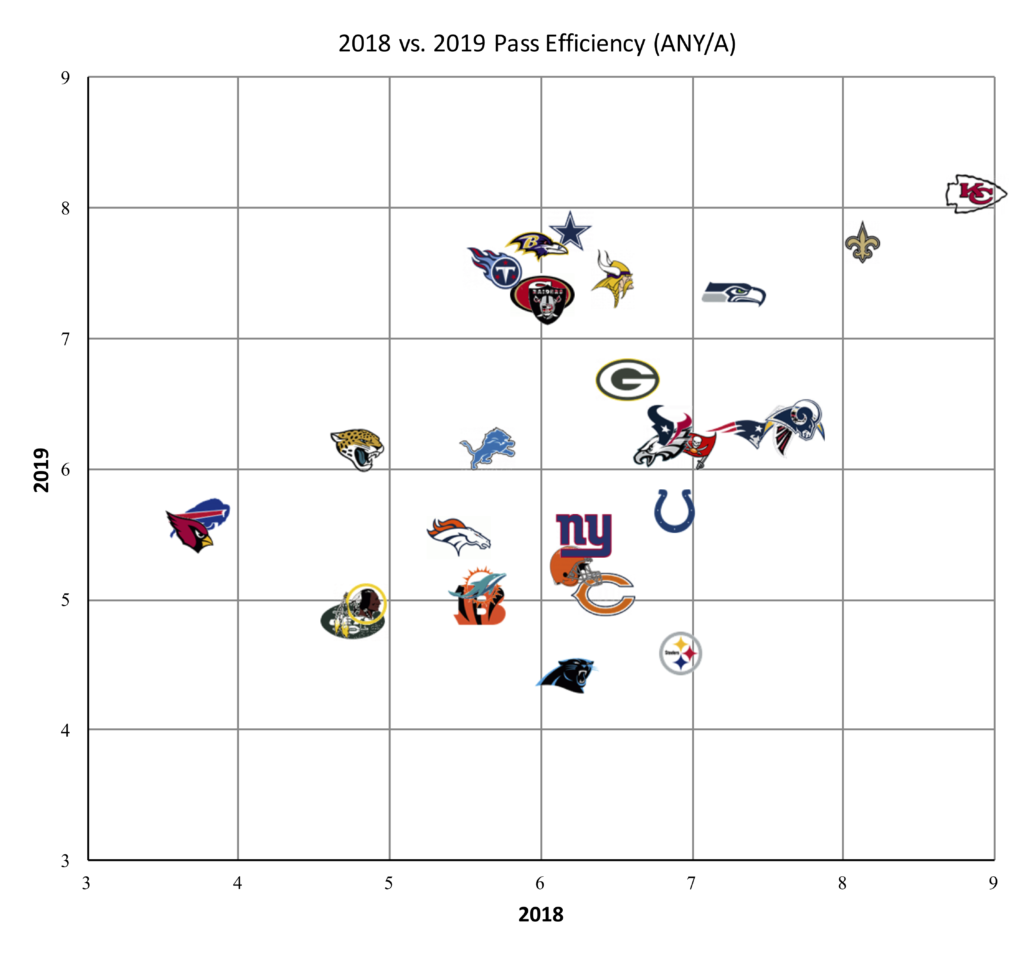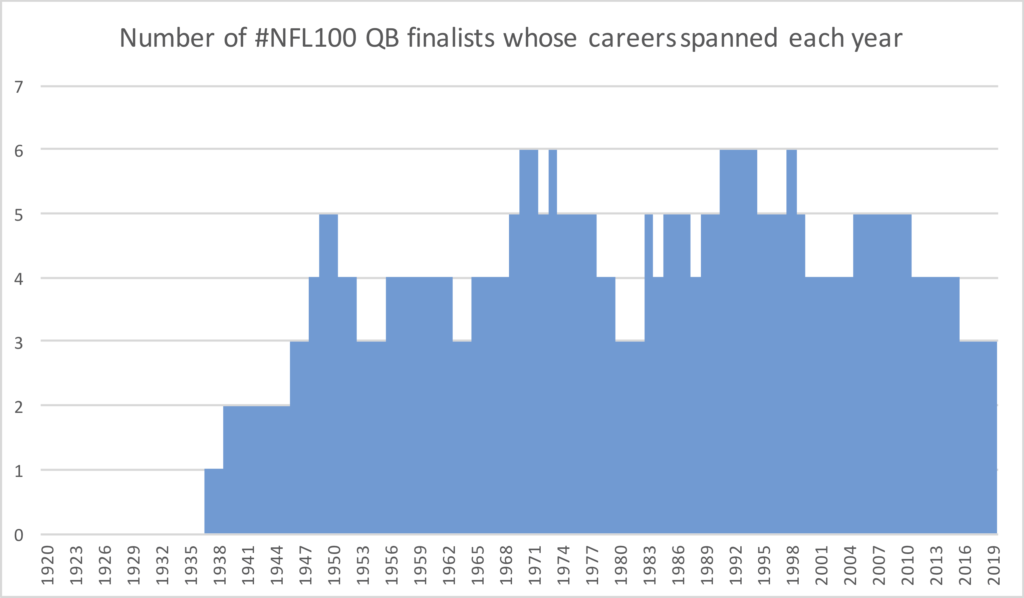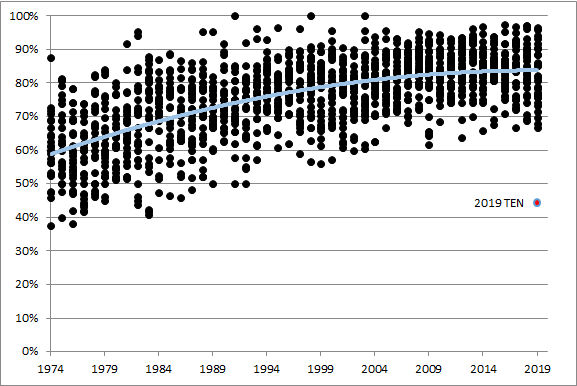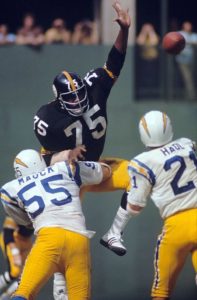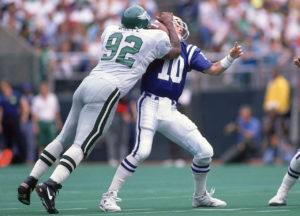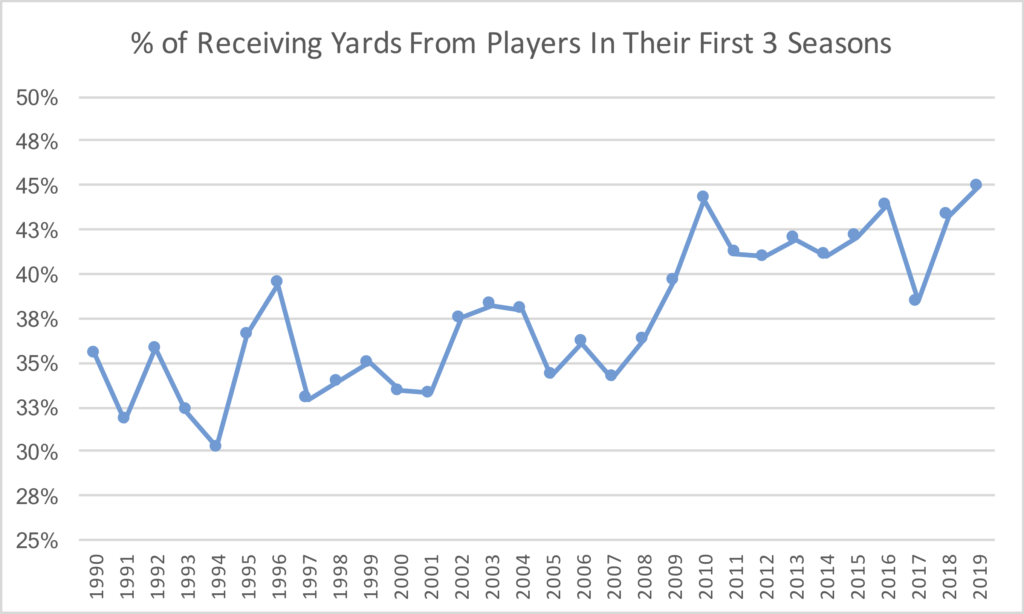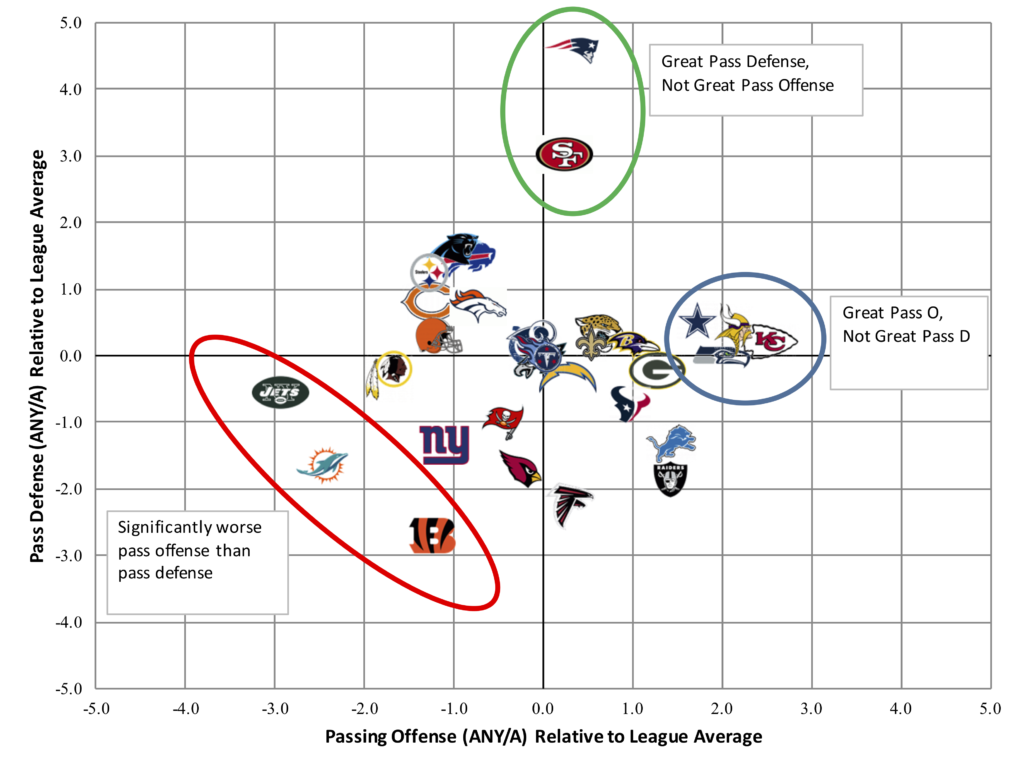This is the third piece in my series The Grand List, or: the top 1000 players in history. Part three covers players 964-940. We’re still in Hall of Pretty Good territory, and it won’t be until we’re in the 500s or so that every player we discuss will have a legitimate argument for Canton. [1]And we won’t see surefire GridFe HOFers till we reach the 200s. Today’s section includes some overlooked stars of yesterday, some active veterans, and a young guy who will likely finish his career in the top 200 if he stays healthy. As always, send complaints to DeleteSansReading@gmail.com.
Previous articles in the series
The Grand List, part 1: Includes honorable/special mentions and players 1000-990.
The Grand List, part 2: Includes players 989-965.
Now, on to the list.
The List, Continued
964. Wesley Walker (1977-1989)
Wide Receiver
New York Jets
Walker was a big play threat on some pretty offensive offenses. He averaged over 20 yards per catch in seven different seasons, but his best outing may have come in a year he didn’t. In 1982, he had a very good regular season and followed it with an excellent postseason, in which he picked up 104 yards per game and 19.6 yards per reception. Unfortunately, his best season came in a strike-year, and it rarely gets brought up. Walker did lead regular season receivers in yards (1169) and yards per catch (24.4) in 1978. That’s the year people mention, if they mention him at all. [2]Statistically, his top seasons were 1982, 1978, and 1986, when he posted TRY marks of 1649, 1482, and 1304, respectively.
963. Babe Parilli (1951-1969)
Quarterback, Punter
Boston Patriots, Green Bay Packers, New York Jets, Ottawa Rough Riders, Oakland Raiders, Cleveland Browns
Parilli earned three trips to the Pro Bowl and one first team all pro nod. He also nabbed a GridFe Automatic Award for most valuable player for his 1964 campaign that saw him lead the league in yards and touchdowns on his way to a 10-3 record. Parilli didn’t have that many great seasons, but even a few great years at QB is enough to make a list like this. [3]Among quarterbacks with at least 1500 combined regular and postseason action plays, Parilli ranks 168th in Total Adjusted Yards above Average (VAL) with -991 and 146th in TAYP+ (99).
962. Joe Ferguson (1973-1995)
Quarterback
Buffalo Bills, Detroit Lions, Tampa Bay Buccaneers, Indianapolis Colts, San Antonio Texans
Ferguson wasn’t a highlight reel guy, and he wasn’t a stat padder. He was an understated steady hand who was perfectly suited to the hard-nose Buffalo and Detroit fanbases for which he played. His toughness was exemplified in a playoff loss to the high-flying Chargers, when he played the entire contest on a sprained ankle. During his peak, he did more than just hand the ball to the Juice. Ferguson did post seven seasons with an ANY/A+ of 100 or higher, including four over 115. [4]Of course, 100 is the average performance of qualifying quarterbacks. I use 115 as another benchmark, as it denotes a full standard deviation above average. Among qualifying quarterbacks, Ferguson … Continue reading
961. Brandon Williams (2013-Present)
Defensive Interior
Baltimore Ravens
At 6’1″ 335ish, Williams is a stout presence in the middle of the Baltimore defensive line. He isn’t a pass rusher; his career 101 pressures and 6.5 sacks come to just over one pressure per game and less than one sack per season. However, he is a particularly excellent run defender who can shed blocks to make run stops regularly. Williams also possesses the coveted nose tackle ability to absorb blocks and free up edge rushers and blitzers to make the plays that get all the attention.
960. Jeremy Shockey (2002-2011)
Tight End
New York Giants, New Orleans Saints, Carolina Panthers
Shockey makes the list primarily for his six years in New York, where he averaged 72 catches for 815 yards and 5 touchdowns per 16 games. While there, he also made four Pro Bowls and earned an all pro selection. A bloody terror after the catch, Shockey seemed to relish contact with defenders. His violent trucking of Mike Peterson on a tight end screen his rookie year was a thing of beauty. An added bonus to a fine playing career: he was on teams that defeated two of the greatest quarterbacks of all time in the Super Bowl.
959. Linval Joseph (2010-Present)
Defensive Interior
Minnesota Vikings, New York Giants
Joseph entered the league with all the physical tools you could want from an interior defenders, but he was raw from a technique standpoint. He put in the work to develop his craft and become an elite run stopper and efficient pass rusher. A move to Minnesota saw him switch to his more natural position as a nose tackle. The role played to his strength (strength) and downplayed his weakness (lateral mobility) and allowed him to thrive. Sometimes it really is just about finding a square hole for the square peg.
958. Isaac Curtis (1973-1984)
Wide Receiver
Cincinnati Bengals
Curtis is perhaps most famous for having his name attached to a rule change to open up the passing game, but he also happened to be a fine wideout. With sprinter speed and a long stride, he was as graceful as a gazelle while burning secondaries to the tune of 19.9 yards per catch in his first four seasons (before injuries took a half step from him). His speed and success with Ken Anderson necessitated more physical coverage downfield and ultimately resulted in the eponymous regulation that helped pave the way for the shootouts we see today.
957. Ken Burrough (1970-1981)
Wide Receiver
Houston Oilers, New Orleans Saints
Like many receivers of his era, Burrough’s stats take a hit from playing in the “dead ball era” of passing offense. During his three-year prime, he averaged 1071 yards and 9 touchdowns per 16 games while playing in one of the least friendly passing eras in history (1975-77) and catching passes from Dan Pastorini and the ghost of John Hadl. He was a tremendous deep threat, posting 17 yards per catch during his career, and 19.1 during his peak.
956. Roy Green (1979-1992)
Wide Receiver
St. Louis/Phoenix Cardinals, Philadelphia Eagles
Green was a versatile player who began his career splitting time at wideout and safety. He picked off four passes in his career, and he was solid on punt and kickoff returns, but it is his receiving that lands him on the list. There are only about a hundred receivers with two great receiving seasons, [5]Great, here, is defined as a season with at least 1400 SoftTRY. Green had seasons of 1660 and 1547. and Green easily makes that list. He was a deep threat in an era that started moving away from deep passing. In his best season, he picked up 1555 yards on just 78 catches. Since the 1978 rules changes, only Torry Holt has had a season with a higher average on as many receptions.
955. Fredd Young (1984-1990)
Linebacker
Seattle Seahawks, Indianapolis Colts
Young was a gifted athlete with incredible straight line speed and sideline-to-sideline quickness. He was on the small side for his role, but his athleticism mitigated that issue. An effective pass rusher, both on blitzes and from the edge role he played in nickel, Young put up solid sack numbers during his time in the Pacific Northwest. Speculatively, he would be exciting to see in a modern defense, with a greater emphasis on speed. In addition to his defensive prowess, he was one of the best special teams players of his generation, twice earning honors as the AFC’s top special teamer.
954. Boyd Dowler (1959-1971)
Wide Receiver
Green Bay Packers, Washington
Dowler was a big, strong target for Bart Starr and a vital part of the passing offense on five championship teams. He was a steady receiver (five seasons over 1000 TRY and another three over 900) with soft hands. Importantly for the Lombardi philosophy, he also happened to be an excellent blocker from the flanker position. Like teammates Max McGee and Ron Kramer, Dowler willingly sacrificed numbers for wins, helping build the lead with their receiving skills and eagerly blocking downfield as the Packers ran out the clock with big Jim Taylor.
953. Hugh Green (1981-1991)
Linebacker
Miami Dolphins, Tampa Bay Buccaneers
Overshadowed by fellow rookies Lawrence Taylor and Rickey Jackson, Green helped define the prototype for the rushbacker position. He played a lot in coverage and was better than most rushbackers in that role. [6]It’s fair to say he was as good as anyone outside of Von Miller in that respect. Green began his career with two all pro nods and a Pro Bowl alternate selection before injuries started effecting his play. He rarely left the field, and he often played hurt, but he remained a threat as a rusher and dissuaded passers from his coverage. His heroic efforts in 1982 earned him a DPOY pick from Dr. Z.
952. Pierce Holt (1988-1995)
Defensive Line
San Francisco 49ers, Atlanta Falcons
Holt began his career on a high note, helping the 49ers win titles in his first two seasons. He was stout versus the run, but he was also an effective pass rusher, picking up a career-high 10.5 sacks in 1989. Moving inside to play tackle on passing downs, Holt had an appetite for disruption on opposing dropbacks. Like many 3-4 ends, numbers don’t tell the whole story. He was great at freeing up guys like Charles Haley and Tim Harris to put up big sack totals and get public acclaim.
951. Brian Orakpo (2009-2018)
Rushbacker
Washington, Tennessee Titans
Orakpo was a top flight pass rusher in Washington and Tennessee. He wasn’t great against the run, but that’s not really what teams paid him for. Because he was a 3-4 outside linebacker rather than an end, he had to drop back about 8-10 times per game. At first, he was pretty bad at it, but he put in the work necessary to improve his game. Orakpo finished his career with 66 sacks, 77 tackles for loss, and four Pro Bowl picks.
950. LaMarr Woodley (2007-2015)
Rushbacker
Pittsburgh Steelers, Arizona Cardinals, Oakland Raiders
Like Orakpo, Woodley was a great pass rusher who was merely decent against the run. He had more help in Pittsburgh’s scheme, with the accompanying talent, but he also played well on his own merit. Woodley ranks ahead of Orakpo for his stellar postseason play, especially his six-sack trio of games en route to a Steelers Super Bowl win in 2008. He began his postseason career with two sacks in each of his first four games, and he followed that with one sack in the next three games. Injuries derailed a promising future.
949. Archie Manning (1971-1984)
Quarterback
New Orleans Saints, Houston Oilers, Minnesota Vikings
Manning was a good quarterback stuck on some terrible teams. Saints fans remember him being a little better than he was, while everyone else probably underrates him a little. On tape, he was a fine quarterback who had to try too hard to make things happen with his surrounding talent. In 1978, for instance, he had great numbers with speedy tight end Henry Childs serving as his primary target. From a stylistic and talent standpoint, I often refer to him as Diet Staubach because he reminds me of Roger Staubach if the Dallas legend was about 15% worse at everything. He did sire some very talented children though. [7]Among qualifying quarterbacks, Manning ranks 194th in VAL (-1941) and 160th in TAYP+ (98).
948. Jim Zorn (1976-1987)
Quarterback
Seattle Seahawks, Green Bay Packers, Tampa Bay Buccaneers, Winnipeg Blue Bombers
Zorn had the unfortunate role of field general for an expansion team, and his career surely would have looked different in a better situation. Counterfactuals aside, Zorn was an excellent scrambler, which came in handy behind his middling offensive line. For the first seven years of his career, he was usually good for about 200 rushing yards per season (242 per 16 games). His passing stats don’t look impressive at first glance, but he didn’t have much to work with outside of Steve Largent. Zorn had the respect of Dr. Z, who named him the NFL’s top quarterback in 1978. [8]Among qualifying quarterbacks, Zorn ranks 104th in VAL (546) and 97th in TAYP+ (102).
947. E.J. Holub (1961-1970)
Linebacker, Center
Dallas Texans/Kansas City Chiefs
Holub was a gritty player who earned six all pro nods at linebacker before moving to the other side of the ball and starting at center in the winter of his career (where he earned another one). [9]As well as the more prestigious Dr. Z All-AFL team in 1969. He was excellent on defense and very good on offense, like 85% of Concrete Charlie. Holub managed to do this in an era fairly far removed from the one platoon system of years past.
946. George Kittle (2017-Present)
Tight End
San Francisco 49ers
The fact that Kittle ranks this highly after just three seasons as a pro speaks to how spectacular his play has been. He is one of the better run blockers among great receiving TEs, and he’s not bad in pass pro either. As a receiver, he is on Olympus. In his second season as a pro, he set the yardage record at the position and led the league in yards after the catch. The following year, he led all tight ends in YAC despite missing two games. [10]He ranked behind only Christian McCaffrey and Austin Ekeler among all players. Kittle is good at getting open, and he is a nightmare after the catch. As a student of history, I don’t take grand claims lightly: Kittle has Rushmore potential.
945. Cecil Isbell (1938-1942)
Quarterback
Green Bay Packers
Isbell was a good quarterback with a beautiful deep ball, but he tends to be overrated by box score scouts. He played in an innovative offense with the most explosive offensive threat of his era (Don Hutson) and had his greatest success in a league weakened by the Second World War. And you can count the number of black defensive backs he faced on zero hands. Nonetheless, he was an exceptional passer, if only briefly. His numbers were incredible, and his tape generally impressed. Additionally, he was a great runner, averaging 450 yards and three touchdowns per 16 games. Want some sprinkles on that cupcake? He had nine interceptions as a defender, including six in 1942.
944. Frank Ryan (1958-1970)
Quarterback
Cleveland Browns, Los Angeles Rams, Washington
Many seem to take a little credit away from Ryan because he played with Jim Brown. While Brown did help improve the team’s winning percentage (thus making the QB’s record look better), playing alongside a star running back who refused to block and didn’t take dumpoff passes any better than his backup wasn’t exactly boosting his numbers. In fact, Ryan set career marks for passing yards and touchdowns the year after Brown retired. That year, 1966, he ranked third among NFL quarterbacks in total adjusted yards above average and earned a GridFe Automatic Award. [11]Ryan had a TAY/P of 6.13 (TAYP+ of 115) and an era-adjusted VAL of 1040. Bart Starr was the most efficient quarterback: 7.34, 124, 1121. Don Meredith also had great numbers: 6.27, 116, 1047. Len … Continue reading He also led the league in touchdown passes (117) during his five-year prime from 1963-67 (that’s two years without Brown). [12]Among qualifying quarterbacks, Ryan ranks 65th in VAL (1792) and 63rd in TAYP+ (105).
943. Dana Stubblefield (1993-2003)
Defensive Interior
San Francisco 49ers, Washington, Oakland Raiders
Stubblefield is an interesting case because, throughout most of his career, he was an effective interior presence against the run. However, he didn’t really receive his due recognition until he put up gaudy numbers as a pass rusher. In 1997, he had 15 sacks from the defensive tackle spot, earning defensive player of the year honors in the process. Playing alongside Bryant Young, he was able to avoid a ton of double teams and focus on beating his man one on one. Stubblefield won most of those matchups in San Francisco before doing what big name free agents do when they move to the nation’s capital.
942. Jimmie Giles (1977-1989)
Tight End
Tampa Bay Buccaneers, Philadelphia Eagles, Detroit Lions, Houston Oilers
Giles did everything you could ask from the tight end position. He put up pretty good numbers, including 620 yards and 5 touchdowns per 16 games at his seven-year peak. That’s 732 TRY per year, which is great for a tight end who rarely played in a friendly scheme or with passers who had the full faith of their coaching staff. He was fast and great at breaking away from defenders once he caught the ball. Giles was also a solid blocker, though no one would confuse him for Hoby Brenner.
941. Jim Mutscheller (1954-1961)
Tight End
Baltimore Colts
It may be a technical misnomer to call Mutscheller a tight end, but that’s effectively the position he played. Despite sharing targets with two inner circle Hall of Famers, he managed to average 800 yards and 10 touchdowns per 16 games during his prime. Adjusting for era and passing environment, that’s 1076 TRY per year with four seasons over 1000 – excellent marks for a tight end (or proto-tight end). [13]For comparison, here are the best-five-year averages for some other notable tight ends: Rob Gronkowski – 1398 Antonio Gates – 1281 Todd Christensen – 1270 Pete Retzlaff – … Continue reading A scoring machine, Mutscheller hauled in a touchdown in nearly one out of every five catches.
940. Roy Jefferson (1965-1976)
Wide Receiver
Washington, Pittsburgh Steelers, Baltimore
Jefferson was the most talented offensive player on a bad Steelers team. His role as a player representative saw him clash with new head coach Chuck Noll, and Noll sent the stud receiver packing. This meant Jefferson missed out on the rebuild and a role on the Steel Curtain Dynasty, but he did see championship gold before Pittsburgh did. In his lone season in Baltimore, Jefferson put up great numbers (1192 TRY), including a score in a Divisional Round victory over the Bengals and two key first downs in the first post-merger Super Bowl. He moved on the Washington and helped them reach the Super Bowl, where he was probably the team’s best offensive performer against the juggernaut Dolphins. [14]He had 5 catches for 50 yards. All of them came on first and ten. Two of his catches moved the sticks. Two more gained seven yards, while another gained eight. That’s five successful plays from … Continue reading He finished his career having posted six seasons over 1000 TRY, including two over 1400.
References
| ↑1 | And we won’t see surefire GridFe HOFers till we reach the 200s. |
|---|---|
| ↑2 | Statistically, his top seasons were 1982, 1978, and 1986, when he posted TRY marks of 1649, 1482, and 1304, respectively. |
| ↑3 | Among quarterbacks with at least 1500 combined regular and postseason action plays, Parilli ranks 168th in Total Adjusted Yards above Average (VAL) with -991 and 146th in TAYP+ (99). |
| ↑4 | Of course, 100 is the average performance of qualifying quarterbacks. I use 115 as another benchmark, as it denotes a full standard deviation above average. Among qualifying quarterbacks, Ferguson ranks 159th in VAL (-727) and 143rd in TAYP+ (99). |
| ↑5 | Great, here, is defined as a season with at least 1400 SoftTRY. Green had seasons of 1660 and 1547. |
| ↑6 | It’s fair to say he was as good as anyone outside of Von Miller in that respect. |
| ↑7 | Among qualifying quarterbacks, Manning ranks 194th in VAL (-1941) and 160th in TAYP+ (98). |
| ↑8 | Among qualifying quarterbacks, Zorn ranks 104th in VAL (546) and 97th in TAYP+ (102). |
| ↑9 | As well as the more prestigious Dr. Z All-AFL team in 1969. |
| ↑10 | He ranked behind only Christian McCaffrey and Austin Ekeler among all players. |
| ↑11 | Ryan had a TAY/P of 6.13 (TAYP+ of 115) and an era-adjusted VAL of 1040. Bart Starr was the most efficient quarterback: 7.34, 124, 1121. Don Meredith also had great numbers: 6.27, 116, 1047. Len Dawson and Tom Flores have better numbers, but those don’t include sacks because I can’t find full AFL sack data. Their numbers also came against AFL defenses. |
| ↑12 | Among qualifying quarterbacks, Ryan ranks 65th in VAL (1792) and 63rd in TAYP+ (105). |
| ↑13 | For comparison, here are the best-five-year averages for some other notable tight ends: Rob Gronkowski – 1398 Antonio Gates – 1281 Todd Christensen – 1270 Pete Retzlaff – 1266 Kellen Winslow – 1225 Tony Gonzalez – 1211 Shannon Sharpe – 1197 Jimmy Graham – 1164 Dave Casper – 1131 Mike Ditka – 1122 Jason Witten – 1108 John Mackey – 1050 Ozzie Newsome – 1031 |
| ↑14 | He had 5 catches for 50 yards. All of them came on first and ten. Two of his catches moved the sticks. Two more gained seven yards, while another gained eight. That’s five successful plays from an EPA perspective. |


